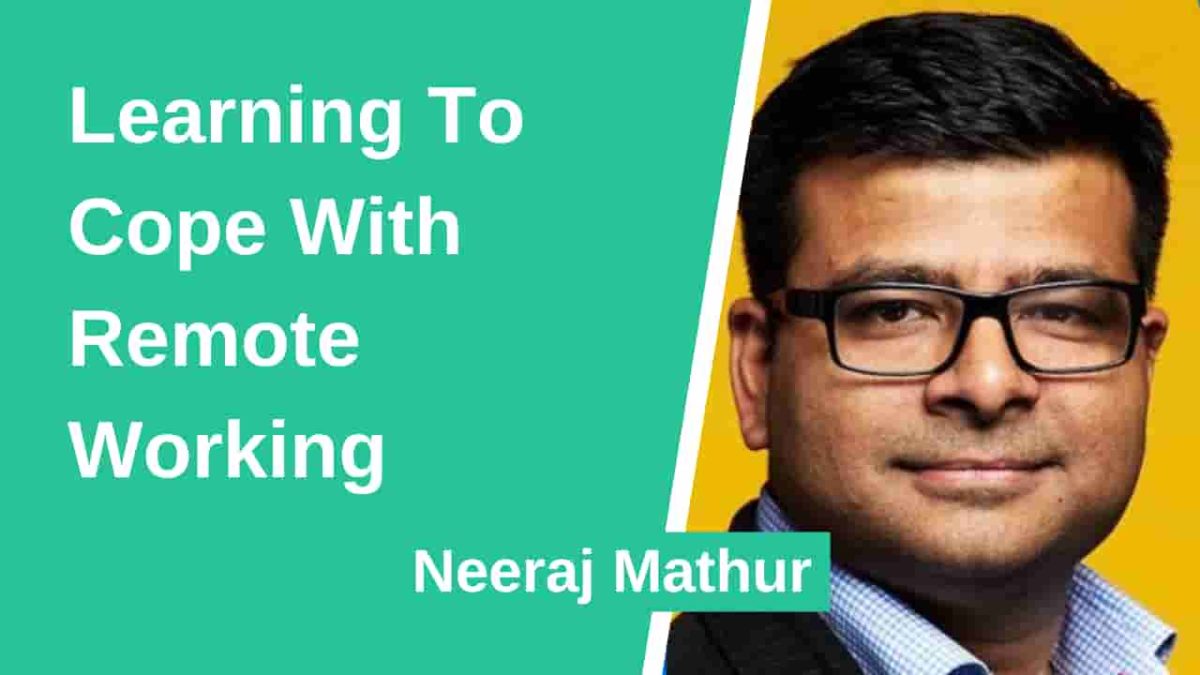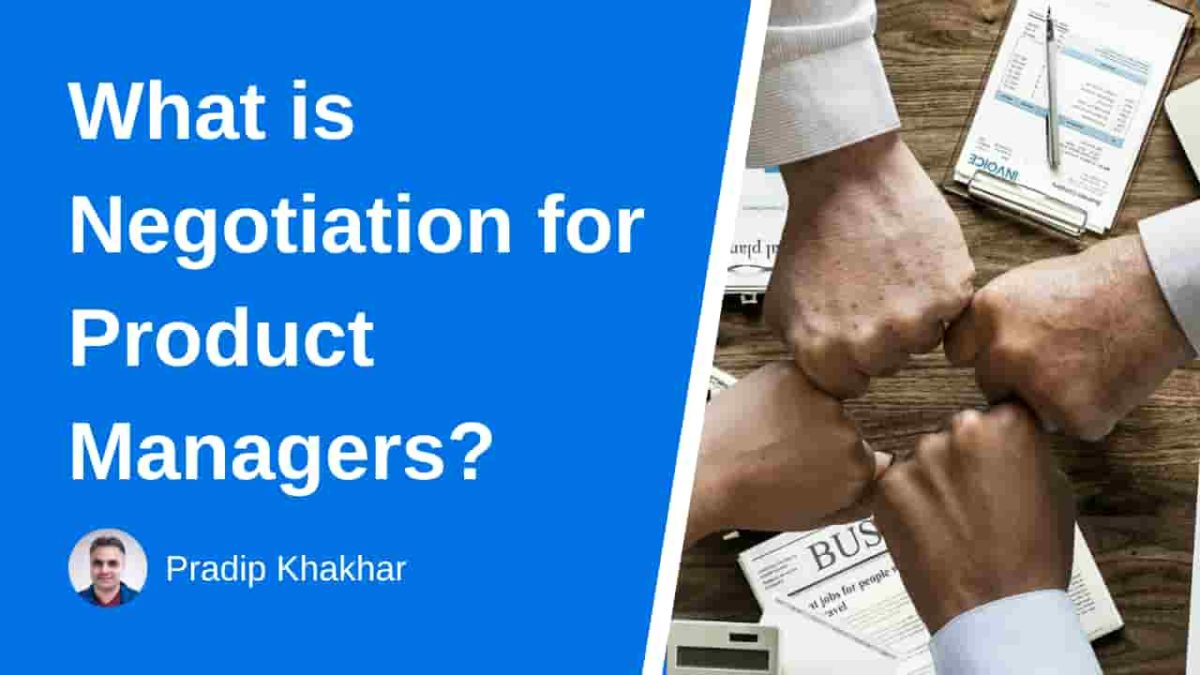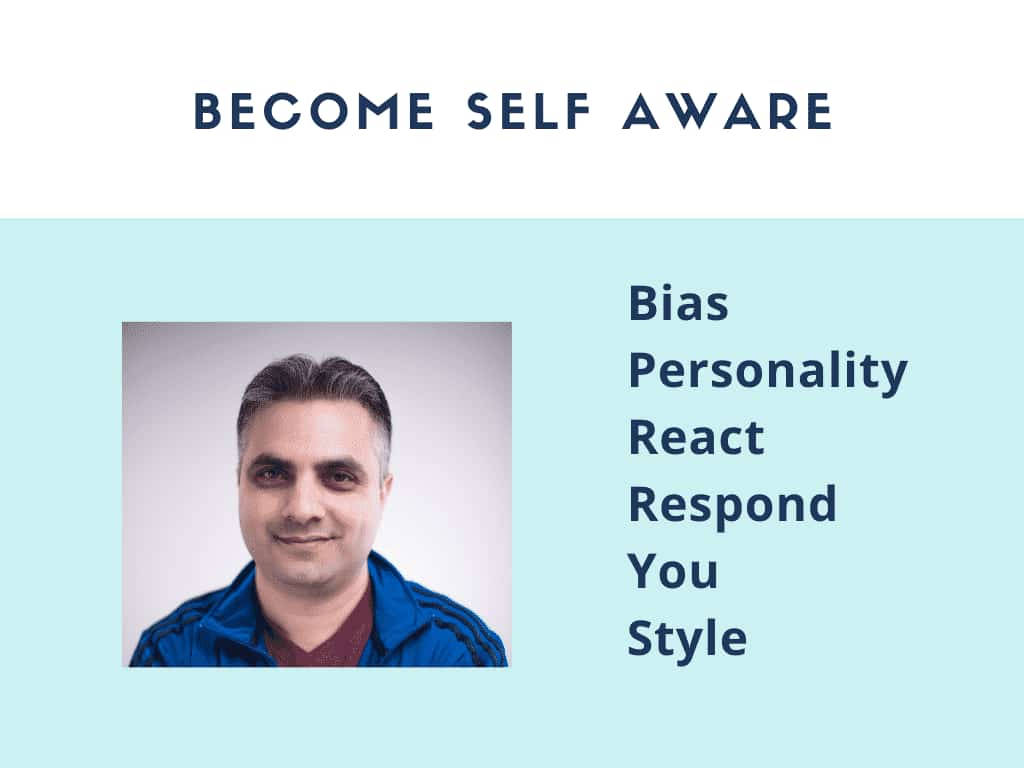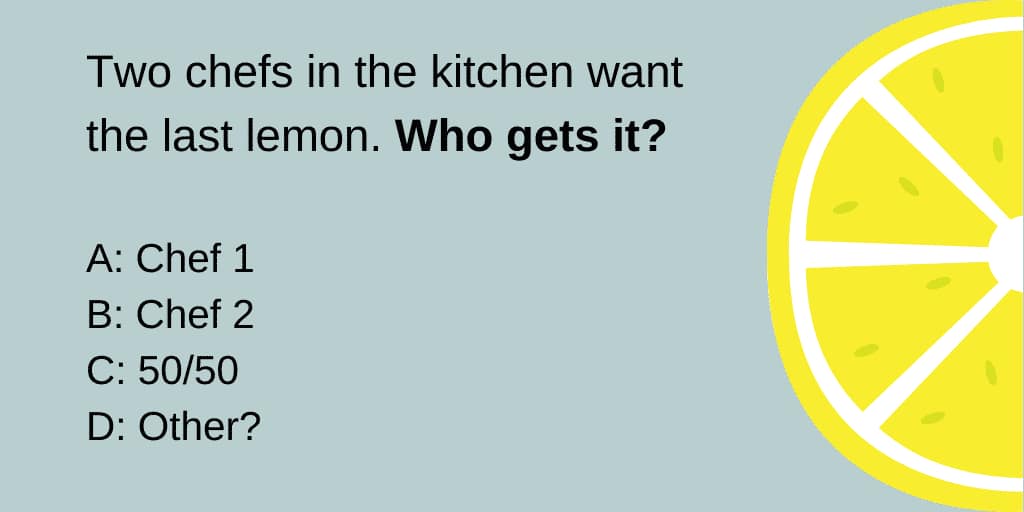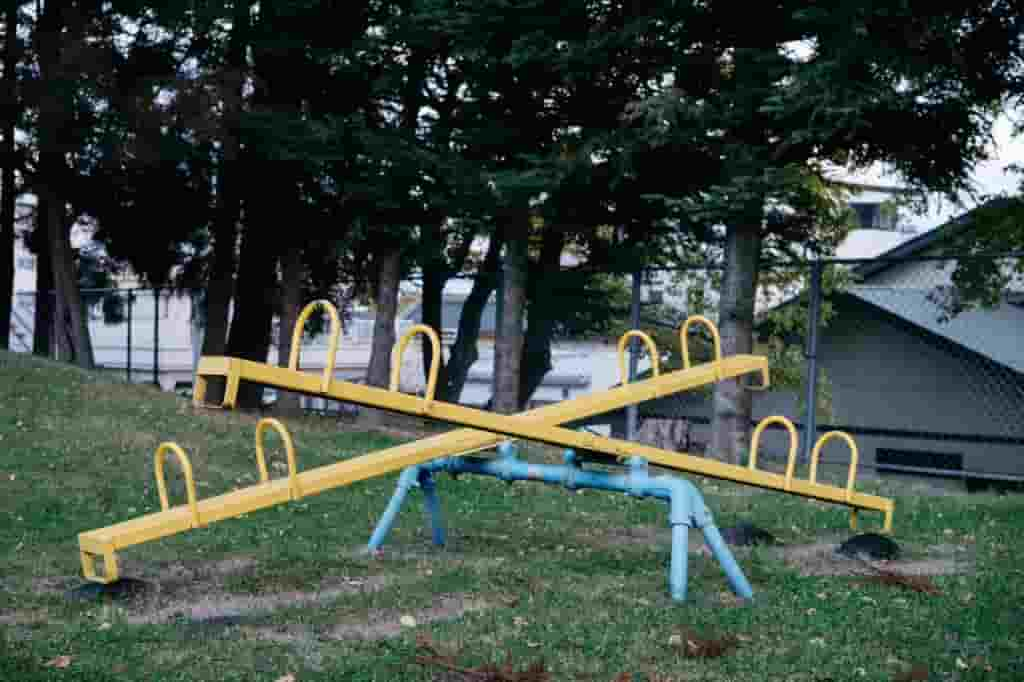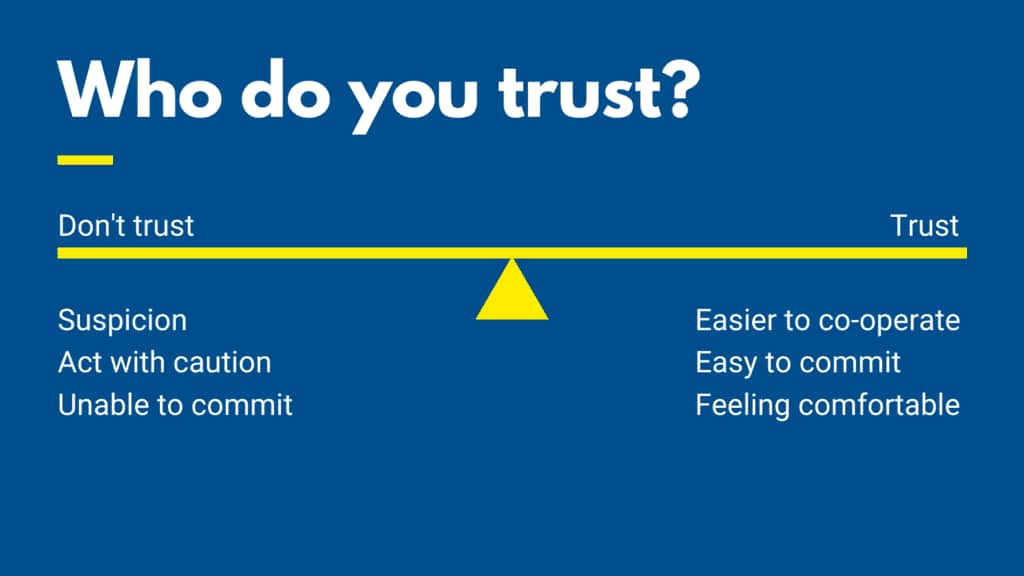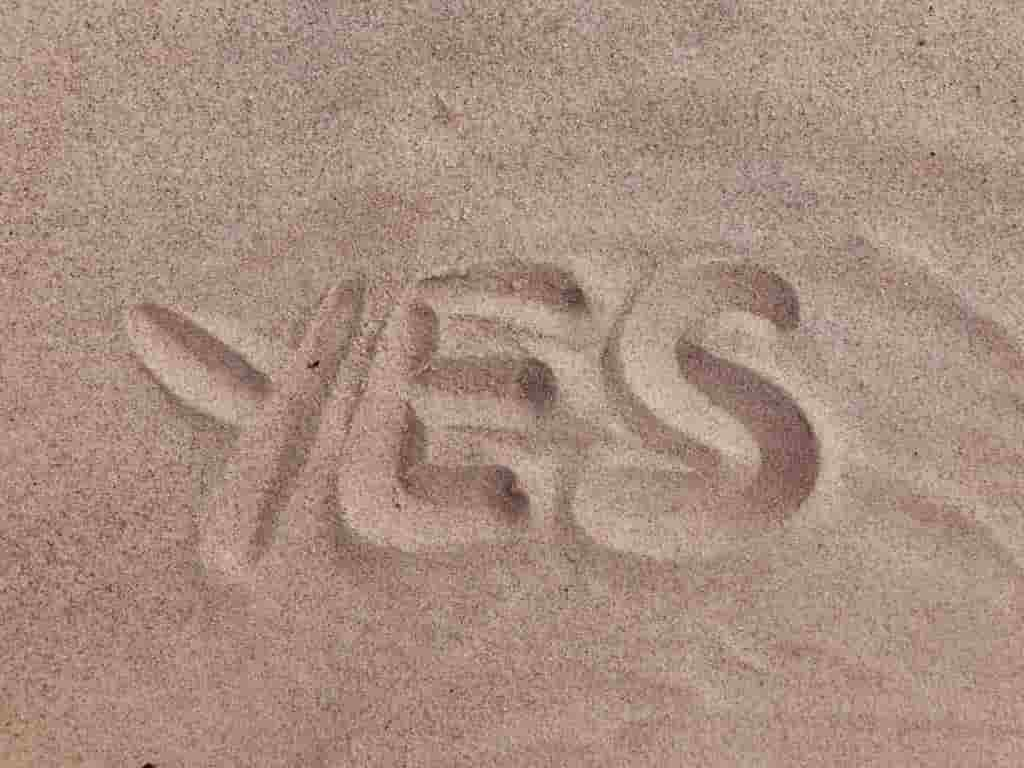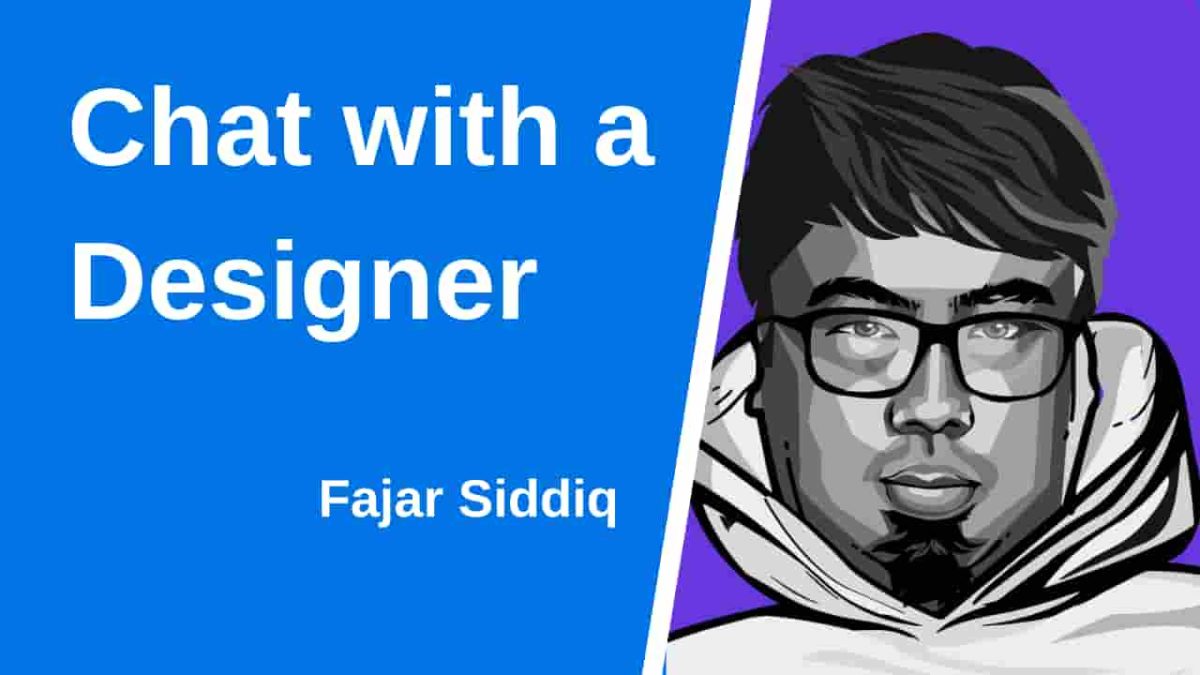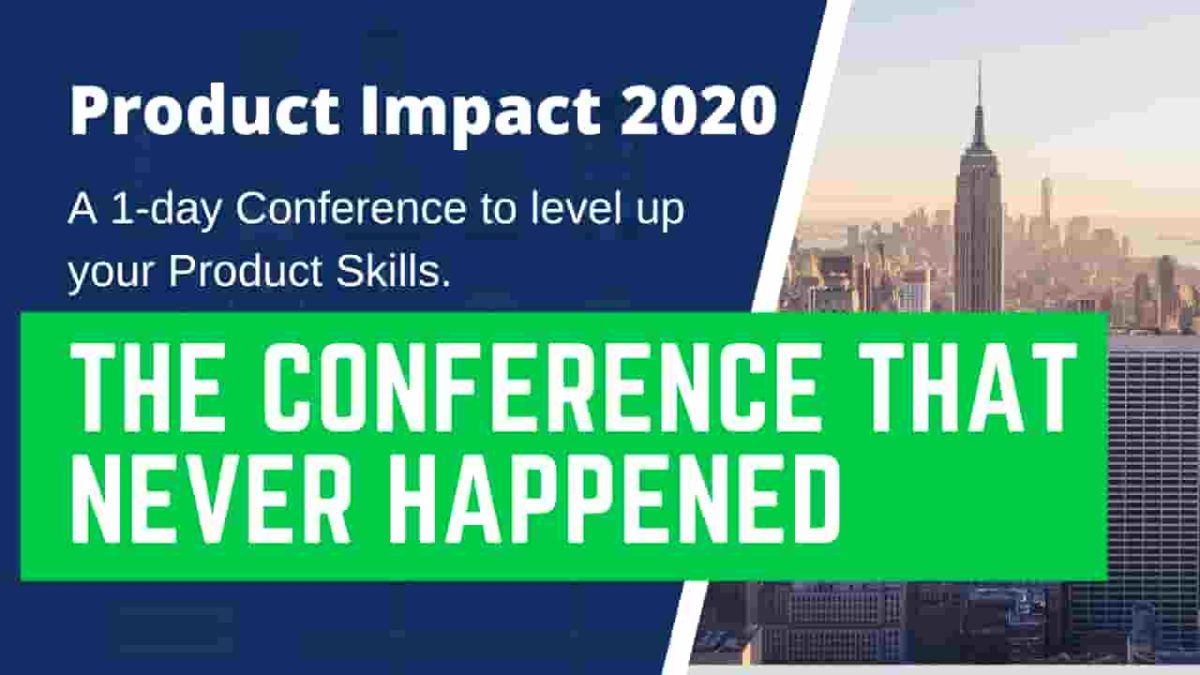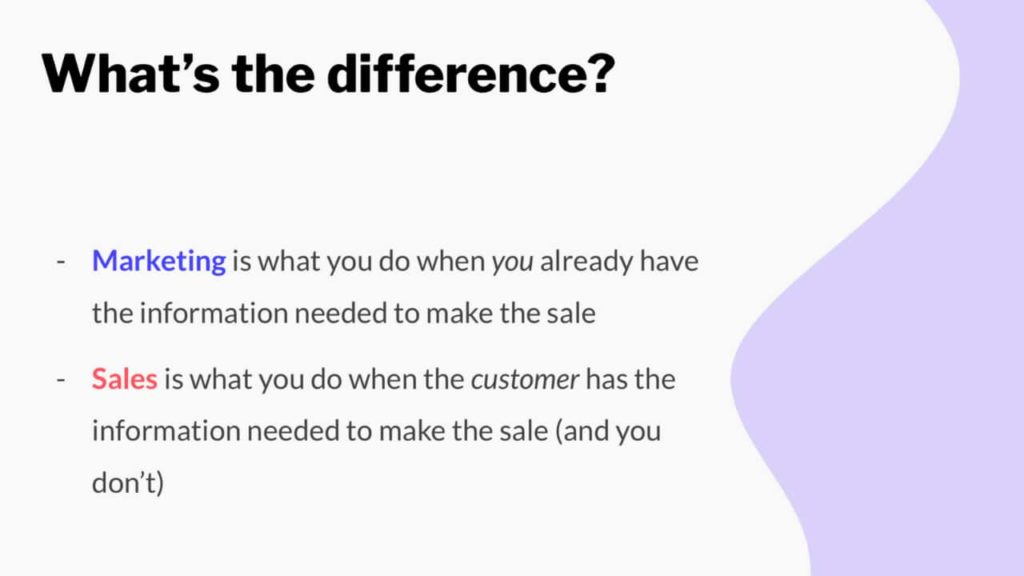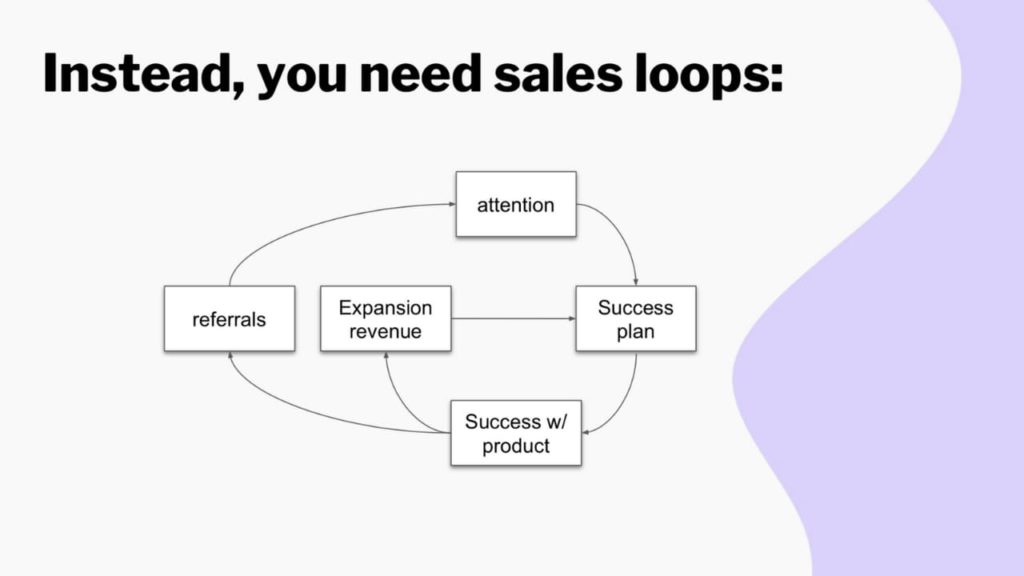Today, April 01, 2020, we scheduled our first conference – Product Impact 2020. Instead, it’s now the conference that never happened.
In this article, we talk about our experience in organizing Product Impact 2020 from idea to cancelation.
First, organizing a conference is a lot of hard work, there are so many ups, and downs. Throughout our journey, we experienced the feeling of are we going to be able to sell even one ticket. Other times we thought oh man why did we even think we can host a conference. At times we considered getting a bigger space.
It was a roller coaster of a ride with a lot of learnings.
However, through Product Impact 2020 we connected with many amazing folks, from individuals looking to get into the product space, individuals who are new product managers, and individuals looking to move into product leadership roles.
Yes, it’s a lot of hard work and many evenings and weekends spent away from the family trying to get Product Impact 2020 off the ground. Thanks to our amazing community it is all worth it.
Table of contents:
Part 1: The Idea & vision
1.1: Why create a conference
1.2: Creating value for attendees (why would someone attend)
1.3: Picking a date
1.4: Greenlighting the conference
Part 2: Finding speakers & relevant topics
2.1: Call for speakers
2.2: Reaching out to speakers
2.3: Selecting the topic and delivery method
2.4: Preparation sessions
Part 3: Sales & Marketing
3.1: Pricing strategy
3.2: Ticketing platforms
3.3: Social media
3.4: To discount or not
Part 4: Execution
4.1: Getting ready for a lot of work
4.2: Things to prepare before the day of
4.3: Plans for the day of
4.4: Communications with speakers, attendees, and vendors
Part 5: Prioritizing the health & safety of our speakers and attendees
5.1: The world turned upside down
5.2: Involving our speakers and attendees
5.3: The decision
5.4: Communicating our decision out
Part 6: In Closing, a message from our founder
6.1: Lessons learned/ the reality
6.2: The positives
6.3: The negatives
6.2: Thank You
Part 7: What’s next
The conference that never happened
Part 1: The Idea & vision
1.1: Why create a conference
After talking to a number of Product People we (think we) identified a gap. The Product Angle and Product Impact 2020 is our attempt at solving this gap.
If you have not yet read why we started The Product Angle read our About The Product Angle page, and the behind the scenes look at Product Impact 2020.
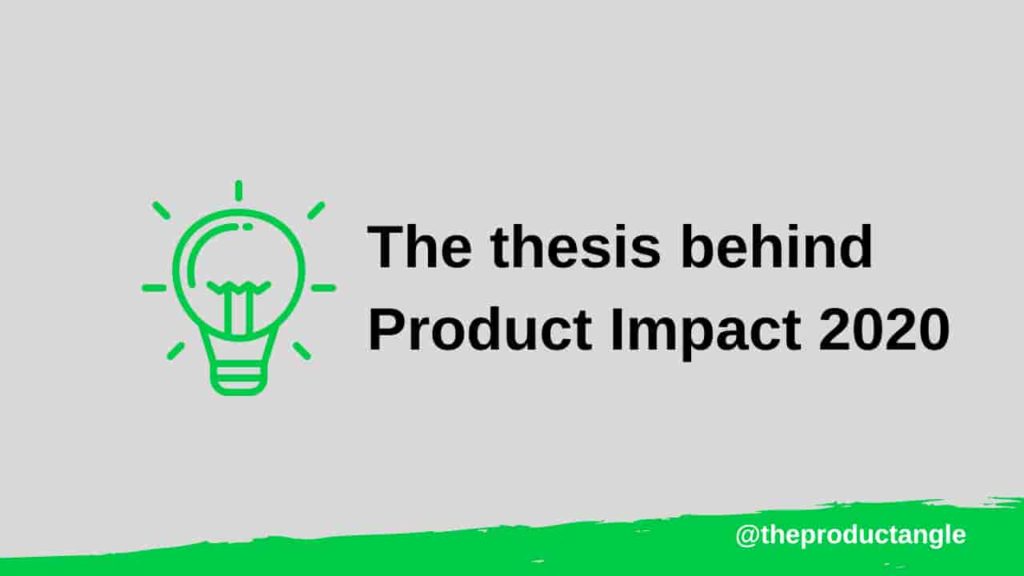
The thesis behind Product Impact 2020
Behind Products people want to buy & use there *usually* is an exceptional cross-functional team.
When the team comes together and there is alignment – everyone knows:
- The company objectives/ mission
- Their specific role and how they contribute to the mission
- How to get there
Creating alignment is difficult (not impossible). For that reason, building an exceptional cross-functional team is hard. Each function has its own politics, strengths, motivations, etc.
Therefore, we suggest using communication skills as a superpower.
Growing in silos is difficult and potentially wastes resources.
Don’t just talk product with the team.
Furthermore, Understand:
- What and how they think
- Their motivations
- What challenges they face
- The meaning of success to them
Therefore, good relationships are important in team dynamics. People like to work with other people they trust.
The Gap
Working in cross-functional teams involves a lot of work, communication, and negotiation. However, from what we saw during our customer research, and competitor research phase there are not that many resources to help Product People Communicate, Negotiate & Evangelize effectively while building trust, and confidence in Product teams.
Learning from cross-functional teams
In the product world, we all know how important customer/ user research is. However, Products are made by exceptional cross-functional teams. As Product People, we can only go so far to train other Product People.
Therefore, we believe and advocate there is an opportunity to learn from other cross-functional team members. Let’s bring other cross-functional team members’ viewpoints into our curriculum, training materials, and coaching sessions.
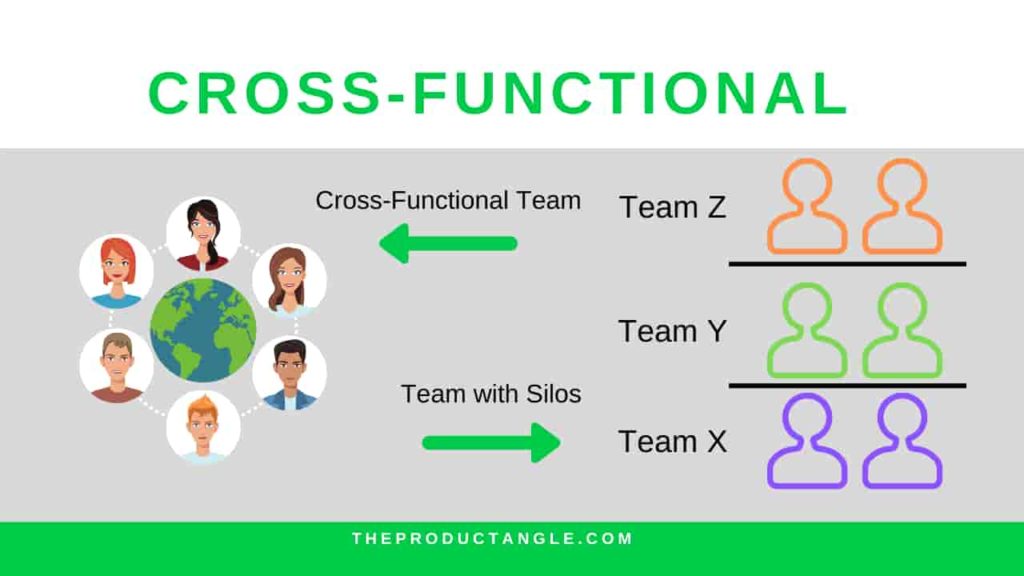
Product Impact 2020 Speakers
That’s exactly what we did. Our diverse Speakers are NOT all Product People.
Are you interested in learning from other cross-functional team members (Marketing, Engineering, and Community, Design, etc.) then Product Impact 2020 is the event for you?
What we are NOT saying
To be very clear we are not saying Product People should take over and do the job of Engineering, UI/UX, CX, Design, or any other function for that matter.
Seems like other Product leaders also agree
What we think
We think we will double down on this thesis. Maybe we are wrong, but we will continue to talk to our customers/users, run experiments, take those learnings and iterate.
If you have any comments feel free to tweet ☝️.
Read the full thesis behind product impact 2020.
1.2: Creating value for attendees (why would someone attend)
Before we announced Product Impact 2020 we spoke to a number of Product People, a lot of work went into research and talking to our community.
First, we thought out why we attend conferences.
Next, we asked our community members if they attended conferences and if they did what they liked/ disliked about the conference experience.
Key Insights
The insights shared with us were very valuable. A few takeaways that have stuck with us are:
- There usually is a huge buzz leading up to and day of, however, the energy seems to disappear the next day
- Attendees learn so much, however, during the day there generally isn’t enough time to absorb all the information and how to use what we just learned in our daily professional work lives
- We found attendees loved the human interaction of meeting other Product People especially those serendipity interactions during breaks, lunches, and in the corridors
- On the flip side, we learned that attendees found sitting through hours of talks/ lectures about how that cool tech company does X was valuable. However, attendees also wanted to know how they can bring that knowledge or learning into their daily lives, into their roles to advance their careers
Therefore, as we built out Product Impact 2020 we created a mix of talks/ lectures and practical applications of learnings relevant to Product People/ Managers.
Our value proposition revolved around the phrase Learn by doing.
Product Impact 2020 is a 1-day conference where you’ll hear from amazing speakers AND participate in interactive sessions where you’ll learn by doing!
Our sessions are focused around:
- Showing attendees the theory/ concepts etc.
- Allow the attendees to practice how the theory/ concepts can be applied in their daily lives
- Discuss as a group (a safe environment to allow them to make mistakes, experiment, and learn by doing with fear) what they learned, how they can apply what they learned in their daily lives and any challenges they foresee.
- Including “traditional” talks/lectures”
Learn by doing
One of the things we learned teaching workshops/classes for the past nine-plus years is that students want actionable learning that they can relate to in their daily lives.
Why Product Impact 2020 is different
Product Impact 2020 was created after chatting with a number of different Product People about their experiences and what they would like to see. If you:
- You enjoy listening to professionals talk about their practical experiences and would like the opportunity to ask questions
- When you learn something new you also want to know how to apply it immediately in your professional careers (and practice your new skills in a safe environment)
- Access to no-fluff, no-nonsense actionable content
We don’t know if these are considered good/ bad or if there is an industry-standard. We have created Product Impact 2020 with Product People in mind and what we thought was right for the participants and speakers in an attempt to differentiate Product Impact 2020.
If you are someone who follows trends/ statistics let us know how we compare to the industry.
1.3: Picking a date
Picking a date was one of the hardest things to do. Being in NYC there are so many events and meetups competing for attendees.
We considered a number of different months to potentially host the event. Initially, we considered:
- June 2020, however, with summer right around the corner we decided against June 2020.
- September 2020 is a good candidate.
- March 2020, is also a good candidate. The weather in NYC starts to be warmer
- April 2020, again this was another good candidate where the weather in NYC starts to be warmer and it is before the summer events
After chatting with our first round of confirmed speakers, we decided on 01, April 2020.
Why April 01, that’s April fools?
We think that was part of the attraction. Hosting a conference is a *big* deal and we could potentially make some jokes about April fools during the conference.
During the opening welcome remarks, one of the jokes we were planning to potentially use was to Thank everyone for attending Product Impact 2020, however, this was one big April fool’s experiment. There is no conference, feel free to eat breakfast and be on your way home.
We did not fully think this through. We have ideas we were not sure which *joke* to use.
via GIPHY
1.4: Greenlighting the conference
Hosting a conference is a *big* deal that takes a lot of time and effort. Initially, when we spoke to our speakers we indicated that 2 weeks prior to the conference i.e. approximately March 18, 2020, we would make the *final* call if we should move ahead or scrap the concept.
Therefore, giving us a level of comfort knowing if the expenses exceed the ticket sales or if there was not sufficient interest we could *cancel* the whole conference. (could not think of a better word all things considered).
Luckily in Jan 2020, the conversations with the speakers went something like:
Super excited to officially let you know that Product Impact 2020 is a go.
We are close to the budget and we feel we still have time (2 months), and if we don’t make more sales we will personally make up the difference.
Hence. we appreciate your sharing/ engaging on social. We appreciate your continued support.
We have also sent a speaker-only dinner invite.
There was a sense of relief. Product Impact 2020 was a go, however, on the flip side that meant we had to deliver the best experience we can. At the end of the conference, we want attendees to walk away feeling wow. This was a fantastic learning experience.
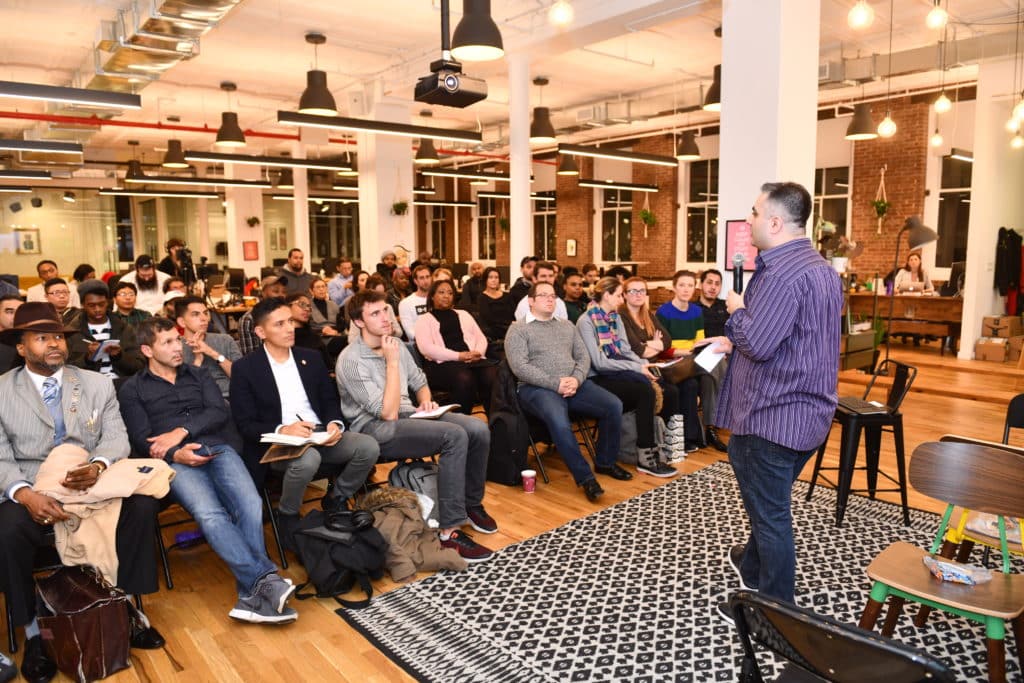
Table of Contents:
The conference that never happened
Part 2: Finding speakers
Speakers are the main attraction. People want to hear from their favorite speakers. Therefore, we immediately started to brainstorm who we would like to invite to speak. Who we would like to hear from. As we made a list we needed to craft our story.
2.1: Call for speakers
When we first came up with the Idea for Product Impact 2020 we had no idea that call for speakers was even a thing. However, once we did realize we did not utilize a call for speakers for a couple of reasons:
- We wanted to curate the experience for attendees
- Being a “new” entity there is a chance people may not want to submit a talk
Plus reaching out to speakers whom we knew or could be introduced facilitated through a warm introduction meant the chance of that speaker saying yes (at least in our opinion) was higher.
Product Impact 2020 Speakers
We are truly grateful to all the speakers who said yes. As you can see we had a fantastic speaker lineup.
2.2: Reaching out to speakers
While we were confident (to an extent) people would give us time to talk to them about Product Impact 2020 we were very cautious since we are new and this is our first conference. Our fear was people would want to be associated with us.
Our cold emails looked something like this:
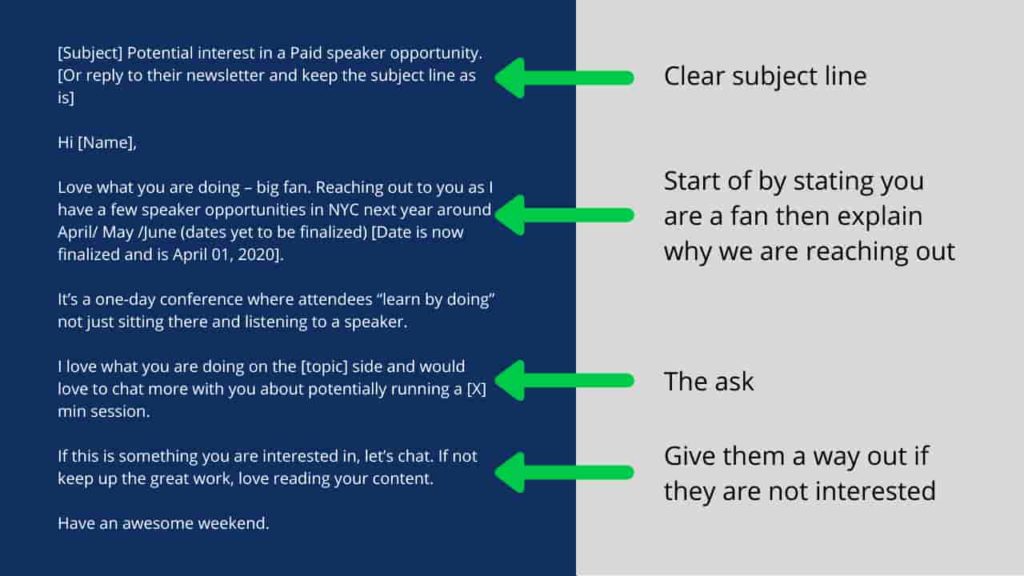
(Image inspired by Harry Dry from Marketing Examples)
Telling our story
Looking back we got a response to our email from *nearly* everyone. The next step was to jump on a call. The call allowed us to chat about our story and our thesis behind Product Impact 2020.
We also talked about vision and potential fit. If we thought things were moving in the right direction the next step was to determine if the potential speaker was ready to make a commitment or needed some additional time to think about it.
2.3: Selecting the topic and delivery method
Similar to curating the speakers, we wanted to curate the topics based on our research.
In line with what we mentioned above, we created a mix of hands-on learning sessions, traditional talks, and hybrid sessions.
In the following section, we talk about how we decided on the following sessions. The list is in order of events for the day.
Speaker: Katelyn Bourgoin
Katelyn is a customer discovery geek (no, we didn’t make that up it’s on Katelyn’s website). We first heard about Katelyn through a webinar she did and she kept our attention for the full hour. Actually, we did not even realize an hour flew by.
Over the 2019 summer, Katelyn held a paid webinar in which she invited us through a personalized video. That was our first video invitation. I mean c’mon Katelyn spent time personalizing the video invitation and made it relevant to us. We had to attend.
The webinar was fantastic and since then we are huge fans of Katelyn. FYI: Katelyn has this amazing PDF on how to do customer discovery interviews and we have been referencing the PDF before we conduct any customer discovery interviews.
We sent a similar email to Katelyn (as shown above), she replied and we jumped on a call. It was exciting to hear that Katelyn also shared out “Learn by doing” vision.
We recalled that during the summer 2019 webinar Katelyn was virtually facilitating her students to conduct mock customer discovery interviews. We asked if Katelyn would be open to doing something like that in person.
The conversations progressed and the next thing we know a two-hour session called How to use customer discovery interviews to get more customers was added to the agenda.
The session includes:
- A talk about Katelyn’s experience
- Practical knowledge on how to conduct customer discovery interviews
- Katelyn to faciliate mock customer discovery interviews
- A discussion as group after completing the mock discovery interviews
Speaker: Mubashar Iqbal
Mubashar is an engineering director and maker of over 80 products. Mubashar has been Product Hunt maker of the year 2016.
At the time we reached out to Mubashar we had never spoken, we were fans of his work and followed him on Twitter.
One Saturday morning we sent a DM via twitter and luckily within a few minutes, we jumped on a call. That’s when we realized Mubashar is a fellow Brit who has a passion for football (the European kind).
We chatted and we felt the conversation was going very well. We spoke about potential ideas for a session and Mubashar suggested Converting big ideas into small MVPs.
The session would include:
- A 35-minute session where Mubashar takes us through his experience
- How Mubashar create MVPs quickly and effectively
- Then we would open up the floor for ideas/problems from the audience members and Mubashar would ideate live in real-time on how he would potentially create an MVP
Speaker: Marcie Walker
Marcie is a community builder we met Marcie at a Meetup a while ago. We don’t recall the exact channel we reached out to Marcie on (it may have been Linkedin).
Keeping in line with our thesis of learning from other cross-functional team members. We knew building communities is essential for your career as well as your product. In no time Marcie came up with a title for an exciting talk called How to Leverage Community to Accelerate Your Career.
Speaker: Michelle Chu
Similar to Marcie, we met Michelle at a Meetup way back when and we don’t recall the exact channel we reached out to Michelle on (it may have been Linkedin). We jumped on a call and the rest is history as they say.
Michelle’s background in design made her an amazing candidate keeping in line with our thesis of learning from other cross-functional team members.
We keep saying “Behind every product that people want to buy and use, there is usually an exceptional cross-functional team”. Michelle’s session called How to create true partnerships with your design team was truly designed to bring alignment within the team.
Speakers: Tremis Skeete, Erin Essex, Henry Bruce, and Bianka McGovern
Similar to Marcie and Michelle, we met Tremis at a Meetup way back when. It really was a long time, when we reached out to Tremis we needed to indicate that we met each other at a Meetup (in 2018 we think). It was a case of “hey do you remember us?”.
Luckily, after some back and forth Tremis recalled when and where we had previously met. We jumped on a call and chatted about our story and asked Tremis if he’d like to speak at Product Impact 2020.
If we recall correctly, Tremis had ideas about a session. However, Tremis turned the script and asked us what topic(s) we think would be good for a talk. I was a little stumped since I didn’t really know Tremis that well and did not really know where his skills/ interests lie.
We share a few ideas together and Tremis asked us to take a look at his website. After some time we got back on a call and shared some more ideas together. Since we are in an election year one of the ideas I had was to create a product-related debate (you know like what you see on TV but for a product-related topic).
This piqued Tremis’s interest and he told me he had done something similar in the past, that is when Tremis made an introduction to Erin, Henry, and Bianka. We had actually had Henry on the podcast (that we never released but that’s a story for another day).
Potential debate topics
From there the pace picked up the team were excited and looking forward to a product debate. We talked about potential debate topics and came up with the following:
- Product Managers need to have deep technical knowledge of the product in order to be effective
- APIs are perfect for every product
- Coding is the best way to build prototypes
- UX Metrics is the best way to ensure your product is a success
- Market Research is UX Research
- Something else
To get some engagement and create interest in the community we decided to involve our community members to chose what topic the team should debate.
The community decided on…
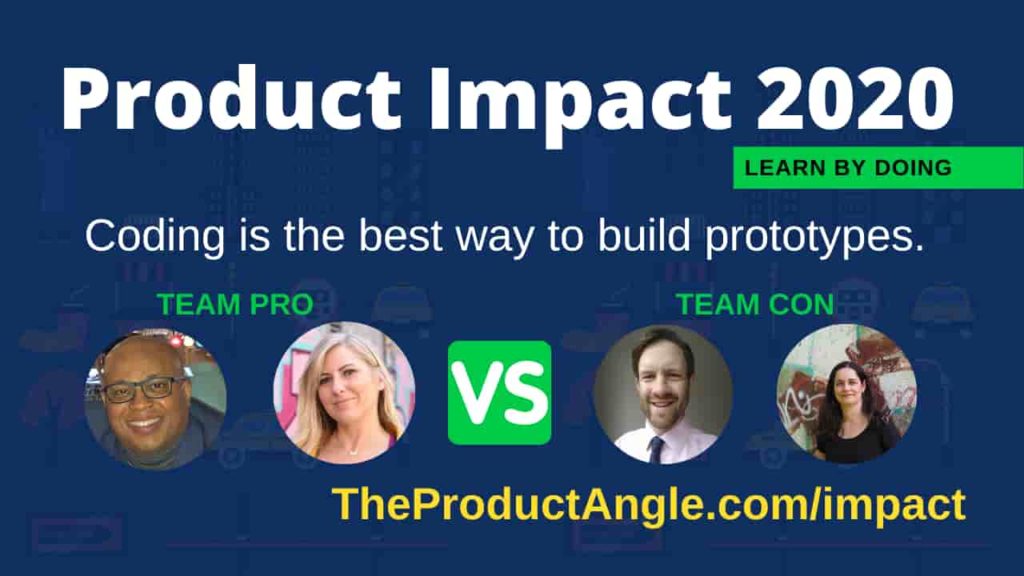
2.4: Preparation sessions
As each speaker agreed to be on board. We had requested two things:
- 30 days before Product Impact 2020 to jump on a call
- 14 days before Product Impact 2020 all slides/ content to be completed and sent to us
Having said that, we did have interactions we each of the speakers informally. So we were always in constant contact with the speakers and here if there were any issues. However, more importantly, working on the materials and staying aligned.
Preparing for the next Product Debate
Since all the speakers for the next Product Debate lived in NYC, we met up for a prep session in Midtown Manhattan.
One night while the TV was on in the background we saw a show where contestants ate hot wings that got progressively spicier (heat). As I researched the show, we noticed the show started on YouTube as an interview series.
We asked the Product Debate speakers if they would be open to recording something similar as we prepared for the debate.
Below is a representation of the conversation.
And here is the team:
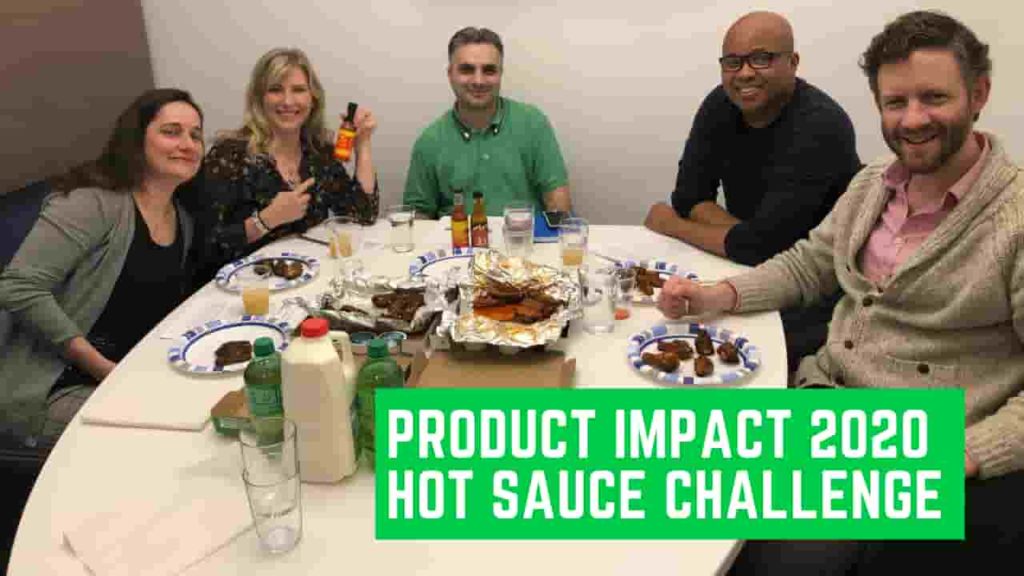
We had a blast recording the hot wings preparation session. It was fun watching everyone eat hot wings while chatting about the debate. The last dab is very hot.
We cannot wait to share the video with you at a later date.
Table of Contents:
The conference that never happened
Part 3: Sales & Marketing
Sales is hard, however, if you make it about making your potential customer successful. Sales can actually be fun.
When we first started selling tickets for Product Impact 2020 we thought in order to get the word out and attract potential attendees we would use blogging, articles, social media, videos, and ads.
In addition, we would cold email potential attendees, getting out there calling people and meeting people.
Now we are by no means an expert in this area. However, it seems like we just described inbound marketing vs. outbound marketing.
We created a list of 300 plus people that we knew/ or think would be interested in attending Product Impact 2020 and started to reach out.
No, our way of outreach is not emailing people and asking them to attend Product Impact 2020.
We would love to write more about our sales approach and outreach program, however, that’s for another article.
Side note
Sales can be fun and rewarding if done right. At the same time, sales can also be stressful especially if salespeople need to meet their numbers and are way off.
Luckily our numbers were reasonable, i.e. we only needed to sell enough tickets to cover our costs.
The difference between sales and marketing
Again, we by no means are an expert at this. In our opinion we view:
- Sales as turning potential (good fit) attendees into paying attendees
- Marketing attracts & educate potential customers
We like the following slides below:
Marketing is what you do when you already have the information needed to make the sale. We don’t. For more information continue reading to the section title “how others saw Product Impact 2020′ below.
Sales is what you do when the customer has the information needed to make the sale (and we don’t). This seems like our situation. As we chatted with people we started to understand what information is needed, again continue reading to the section title “how others saw Product Impact 2020′ below.
The below slide is a fantastic view of sales. Sales get a really bad reputation, and truthfully salespeople are part of the problem when they consistently bombard social marketing DMs, and emails with consistent garbage they call cold emails.
To be clear in our opinion, if cold emails are done right they do work. However, what is a cold email and what should be written in a cold email is debated fiercely online.
So please before you send out a generic email that states “we think our product or service can benefit you” email. Only to follow up with an email that says “hi sending a reminder to bring this higher in your inbox” or “hi just checking you are well as I have not heard from you”. In our opinion what we described is what a number of salespeople do but is not what we consider to be a good cold email strategy.
Anyway, that’s for another day.
Sales is not about making the sale and moving on. It’s about building a relationship and making the customer successful. This leads to happy customers, who can warm intro you to referrals in their networks. Or could be potential candidates for up and cross-selling.
Thank you, Louis, for sharing your slides.
Creating a Product Impact 2020 Scholarship program
At the beginning of 2020, we were thinking about running Product Impact 2020 ads on Linkedin and Twitter. We have absolutely zero experience creating and running ads with either platform. We created mock-up images and ideas for a 30-second video.
Then while doing some research on how to actually implement and execute ads, we got thinking. We could spend $X on ads with (potentially) zero returns.
We would obviously learn about creating ads and buying ads. However, we were learning so much already did we really need to learn more?
That’s when the idea for a scholarship program came to life. We figured why not take the $X budget and give it to people who are interested in attending Product Impact 2020.
We quickly put together an article announcement here. The response was amazing. It was the right choice to make.
How others saw Product Impact 2020
When we first announced Product Impact 2020, the name was actually different. When we first launched we called the concept Pitchside 2020. Because when playing sports you need to be on the pitch. However, as we launched some of the feedback we received included confusion around what Pitchside 2020 was.
People interpreted Pitchside 2020 as something to do with pitching and not product. One late night we were exchanging DMs on Twitter with Hiten, who also suggested next year we change the name. In the back of our minds, we were already considering changing this year.
We floated a couple of alternative names and finally settled on Product Impact 2020, and as soon as we made the announcement people started to get it. It started to click.
Similarly, when we launched we called Product Impact 2020 a workshop (because of the interactive elements), we found people were not as excited about a workshop with nine potential speakers. Based on the people we spoke to felt a workshop should be lead by one or two people.
That worked, but not really. Later I spent some time interviewing people by telling them our story and what I hope to accomplish with Product Impact 2020 and asked what they think I am talking about and nearly everyone I spoke to thought I was talking about a conference.
Well guess what we changed all our materials and now Product Impact 2020 is a one-day conference to level up your product skills.
Once we positioned Product Impact 2020 as a conference that when we started getting traction (along with the hot wings challenge).
The timing problem
As an event organizer, we’d like everyone to buy a ticket as early as possible. This gives us an indication of revenue to use against our costs.
However, a lot of people I spoke to said they had no idea what they’d be doing on April 01. It’s way too out there. After chatting with a number of other event organizers in NYC who were kindly willing to share some learnings with us. We realized that NYC is very last minute. Which based on our ticket sales, as we got closer to April 01, the more tickets we sold.
It’s a pain as an event organizer and therefore we kept debating the size of the space we need. Once we hit capacity we would need to stop selling tickets.
What if we get an influx of last-minute sales, what if we don’t?
In the end, we booked a space on the lower end to ensure we don’t bite off more than we can chew.
3.1: Pricing strategy
Pricing is a sensitive yet interesting topic. On one hand, we created a budget of expenses needed to make Product Impact 2020 a reality and we needed to sell enough tickets to cover the expenses.
Initially, when we came up with the idea we knew (and were reminded) that many conferences are sponsored by corporations who want access to the attendee information. Either through being able to “pitch” their product or service on the day of the conference or gain access to emails in order to be able to “pitch” their services after the conference has ended.
Sponsorships
Our immediate reaction was that sponsorships are great to help spread the word and be attached to other amazing companies. However, we decided we would not sell attendee information in any form.
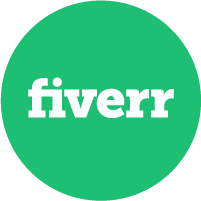
We were not actively searching for sponsorships, however, when we reached out to Marcie to potentially speak at Product Impact 2020 she asked if we would be open to sponsorship. We asked what exactly does sponsorship means and we were able to secure Fiverr as a corporate sponsor. (For that we are very grateful Marcie 🙏).
Then we realized that there may be other companies who may also be interested in sponsoring Product Impact 2020 where we did not need to *sell* our attendee information. We quickly put together sponsorship tiers.
Truthfully speaking, we had no idea if we would land any additional sponsors. For transparency, at the time of canceling Product Impact 2020, we were in talks with a number of companies to potentially sponsor Product Impact 2020 however, we did not *close* any sponsorships. We had an interest in sponsorship packages and we were in discussions. That is a huge deal for us.
As per our budget, we knew tickets would be our main source of revenue and the only way Product Impact 2020 would happen is if we sold sufficient tickets to cover the expenses. We were not interested in making a profit.
Ticket types
While thinking about tickets we wanted to keep it simple, affordable while creating a ton of value.
When we started selling tickets we were approximately five months out and it was towards the end of the year (we think the announcement was made in Oct), therefore in NYC, we knew people generally don’t buy conference tickets that far ahead and therefore to incentivize people to buy we created an early bird rate.
We have friends and family in England, Europe, Middle-east, India, Pakistan, Singapore, and Australia, who wanted to be a part of Product Impact 2020 some were willing to fly to NYC (thank you so much, you know who you are) and some were unable. However, we were asked we could record the sessions and send it to them and someone asked if we could live-stream the event.
Being a small company, the costs to video produce or live-stream were relatively high. Therefore, we decided to create a video-only ticket. This would allow people to support Product Impact 2020 and also get access to valuable content on the day. It seemed like a win-win, and therefore a video-only ticket was created.
Tickets
Video only – $95
You will get access to video recordings of all sessions, an electronic copy of slide decks, and handouts used during the Product Impact 2020 conference. Perfect for those who are unable to make it on the day but would still like to be a part of Product Impact 2020.
Early Bird ticket – $195
Early Bird tickets only available till December 31, 2019. Attend in-person – full-day conference in NYC.
Regular Ticket – $295
Attend in-person – full-day conference in NYC.
One of the most asked questions we received was:
Why are you charging for video access?
Our response:
We would love to share the videos for free. However, as a small company, it costs us to create Product Impact 2020. Video production costs are one of the many costs that need to be budgeted. You can read some of the Behind the Scenes of what goes into creating a conference.
3.2: Ticketing platforms
We checked out a number of different ticketing platforms. This is not a review of ticketing platforms.
We chose Eventbrite as the main ticketing platform for Product Impact 2020. If you are interested in following along click here to be notified of any upcoming events.
If Meetup is your thing we also have a Meetup group here if Meetup is a platform you use feel free to join.
3.3: Social media
When we started like everyone we started with, 0 followers. We knew we needed to up our social media game. After some research we chose Meet Edgar to manage our social media posts.
We are growing our social media slowly but surely. Right now we are active on Twitter and Linkedin.
To be updated about future experiences feel free to connect with us on one of the platforms.
We have a presence on Instagram and YouTube but not so active on these two platforms.
It takes a lot of work to create meaningful social content. It’s been a fun experience learning what works and what doesn’t.
A couple of honorable mentions:
When the Behind the scenes Product Impact article was released it did well.
Also when we released the hot wings challenges that created a lot of interest and as a result, we sold a number of regular tickets. This was a surprise to us, but it proves that we need a balance of education, entertainment, and encouragement.
In keeping with the hot wings session, here is a never before seen video of how we selected the teams.
3.4: To discount or not
This is a question we really struggled with.
Our tickets were (in our opinion) reasonably priced for the value we believe attendees would be receiving. Therefore, we structured the ticket to offer a discount for people who buy their tickets before December 31, 2019, at $195. On January 01, 2020, the early bird tickets would no longer be available and only the regular ticket would be available for product People interested in attending in person at $295.
The video only ticket was available at any point for $95.
However, we understand life happens and not everyone is in a position to be able to spend $295 on a one-day conference. Therefore, on a case by case basis, if potential attendees would reach out for a discount we would evaluate and offer a discount.
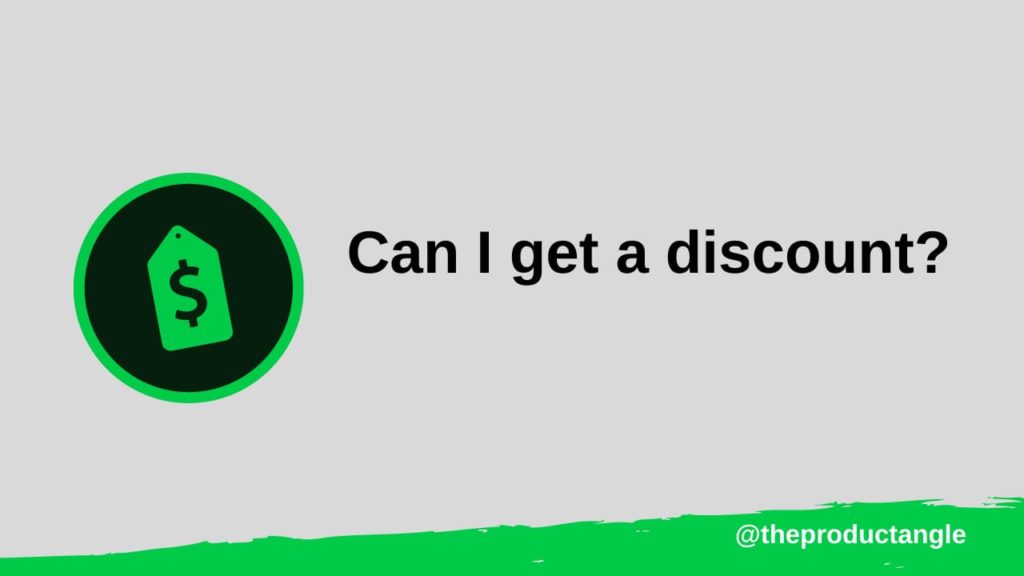
Table of Contents:
The conference that never happened
Part 4: Execution
A friend of ours once said something along the lines of sales is relatively easy compared to successfully delivering what you’ve just sold.
And boy was this person right. So far as a quick recap, we have told you the why behind Product Impact 2020 (our thesis), curating speakers and topics, and setting up tickets to be sold.
Execution of Product Impact 2020 can be a min-book on its own. To be very honest, it is a lot of work and at times can be very overwhelming. Read more about this below in the section called: In closing, a message from our founder.
In this section, we talk about what we were working on. Since this is the conference that never happened, we did not get the opportunity to go through with it (obviously).
4.1: Getting ready for a lot of work
Back around Oct 2019, we made a list of items we think we need to prepare (organize) to successfully pull Product Impact 2020 off. As of January 2020, we were pretty cool and relaxed late into February and early March 2020 (before we called Product Impact 2020 off) we were busy making sure that things were moving along according to plan.
4.2: Things to prepare before the day of
Where do we even begin, there is just so much to take care of. Let’s start with the venue.
The venue
Living in NYC we do not see this as a big hurdle, there are *so many* spaces available. It becomes a case of finding the right venue at the right price.
We considered various locations from downtown, midtown, and even uptown. Each location offering something special and unique to its geographical location.
However, we started to think about the location from an attendee’s perspective. NYC can be a pain to travel around at times and therefore if we picked a venue near major public transportation hubs it would be easier for attendees who are coming in on public transport.
This narrowed our search down to two places. First, the Union Square area has access to many MTA Subway lines and connections are available. The second is Midtown Manhattan, near Grand Central Station.
In the end, we found a sweet spot in Midtown Manhattan, near Grand Central Station.
The Food
Food was very important to us. We wanted to make sure that we catered to the dietary needs of attendees while also providing a selection of teas, coffees, and snacks throughout the day.
The idea was:
- 8 am EST welcome breakfast
- Noon EST lunch
- Afternoon tea (the founder is British after all. Which means *everyone* needs to drink their tea with their pinky high in the air (only joking) maybe?)
- Teas, coffees, and snacks replenished throughout the day
We wanted attendees to be comfortable chatting with other attendees and generally mingling. We did not want attendees wasting precious time searching for food and drinks when they could be using that time networking with other attendees.
Just before announcing the cancelation, we had been looking at a couple of food options. Both in terms of what we would actually serve and the restaurant we would order from.
We were close to placing an order, however, since we did not. We did not have any cancelation or fees associated.
Conference badges
We thought about conference badges and thought do we really need the additional expense. We were in two minds when we first created our Google sheet with a list of potential expenses. As we neared April 01, we thought let’s do it.
Why?
Last time we attended a conference we received a conference badge. For us, we kept it safe as a reminder of attending.
We thought it would be a good keepsake item especially considering it is our first conference.
Our next dilemma was should we print attendee names on each conference badge?
If we do, the lead time would increase and effectively cost more. This got us thinking should we add names for attendees who buy their tickets before a specified date? but then some attendees will have a badge with their name and some won’t. We didn’t really want to differentiate between attendees based on when they bought their tickets.
We looked at printing machines so we could print them internally, the cost of each machine is way out of our budget and we looked to potentially rent a machine.
The below images show the potential conference badge design. Clearly, the back of the conference badge needs some more work.
Front of badge:
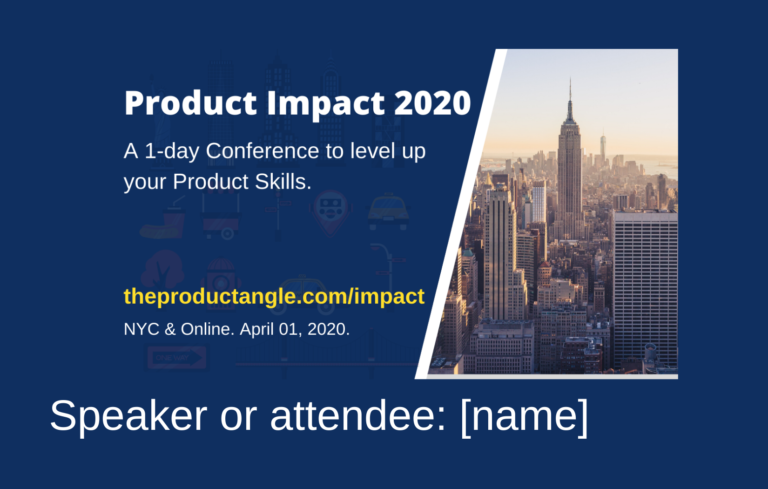
Back of badge:
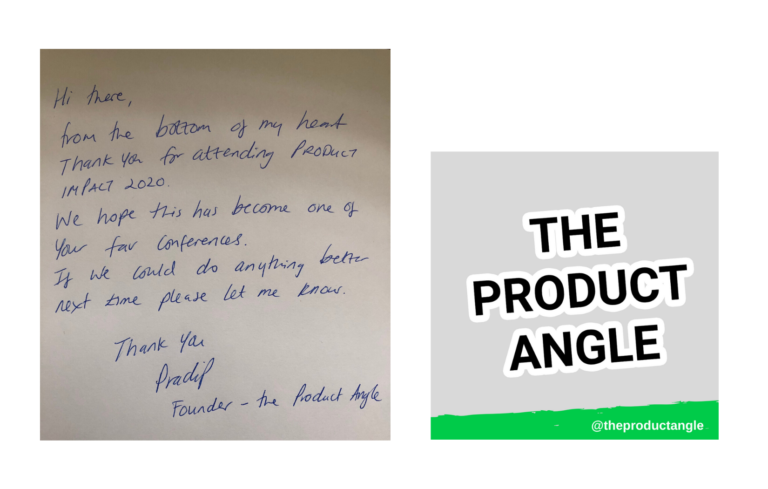
Conference workbook
We were debating creating a printed conference workbook for attendees. The workbook would contain slides, templates, handouts, etc. that speakers would use for their sessions. Attendees could use to write notes.
We say debate because we didn’t want to simply print for the sake of printing (and therefore killing trees), we needed a strong business case.
We were talking to speakers and attendees to determine if they found having a printed book helpful. After all, all attendees will be receiving electronic access to the slides, templates, handouts, etc.
Video Production
We wanted to capture the day through video. Especially for our video ticket holders. Finding a reliable, trustworthy filmmaker is a job in itself. Initially, we asked around friends and family to see if they know anyone who might be interested.
We were put into touch with a film school and thought about giving students some practical hands-on experience. However, once we chatted with one of the faculty members they were looking to position the students in an internship model where they will be given practical advice, training, and access to camera equipment. All of which we could not provide.
Next, we looked at commercial offerings. A full production house would likely be out of our budget. We remembered that we used a freelance filmmaker when we need to record our talk earlier in the year How to build practical negotiation skills.
We reached out to her and she also helped with the hot wings video. She would have been the filmmaker for Product Impact 2020.
The Product Angle Merch
Yes, it’s coming. We would have loved to launch it at Product Impact 2020.
4.3: Plans for the day of
As we approached April 01, 2020, Product Impact 2020 was becoming a reality (before the cancelation). We could list 101 things that could go wrong. The obvious being the food not being delivered on time or the video recording files becoming corrupt.
There were things we could control, however, a number of things we could not control.
Our proposed Schedule
8:30 am – 9:00 am EST
Registration begins
9:00 am – 9:10 am EST
Welcome remarks w/ Pradip Khakhar
9:10 – 11:10 am EST
How to use customer discovery interviews to get more customers (interactive workshop) with Katelyn Bourgoin
11:10 – 11:25 am EST
Break
11:25 – 12:10 pm EST
Converting big ideas into small MVPs (interactive) with Mubashar Iqbal (Mubs)
12:10 – 1:10 pm EST
Lunch
1:10 – 1:55 pm EST
How to leverage community to accelerate your career with Marcie Walker
1:55 – 3:55 pm EST
Communication and negotiation in cross-functional teams (interactive) – simulated negotiation w/ Pradip Khakhar
3:55 – 4:10 pm EST
Break
4:10 – 4:45 pm EST
How to create true partnerships with your design team w/ Michelle Chu
5:00 – 6:00 pm EST
The next Product Debate w/ Tremis Skeete, Erin Essex, Henry Bruce, and Bianka McGovern
6:00 – 6:10 pm EST
Closing Remarks w/ Pradip Khakhar
End of conference 6:10pm
The schedule and what we cover is subject to change.
Live social sharing
Another idea we were thinking of was sharing photos, video clips, and tweets as things happened “on stage”.
Welcoming attendees and checking attendees in
We cannot be in two or more places at once and therefore we needed additional people to assist with welcoming attendees and checking attendees in the morning as well as misc tasks throughout the day.
We were contemplating creating a volunteer application, however, a number of people had reached out offering help and support throughout the day.
4.4: Communications with speakers, attendees, and vendors
By now if you have not figured it out, we believe communication is a superpower. Accordingly, we wanted to keep all stakeholders aware of what’s going on, the objective, and the ask.
We kept in touch periodically with speakers, and you can read more in the speaker’s section above.
Since we canceled approx 30 days out we did not have a need for our communication sequence with attendees. As for the vendors we worked with (i.e. event space) they were actually good to work with.
Table of Contents:
The conference that never happened
Part 5: Prioritizing the health & safety of our speakers and attendees
5.1: The world turned upside down
We had been following the Covid-19 outbreak worldwide since it was first announced. In the back of our minds, we had a gut feeling that we will need to keep an eye on it. Having said that never in our wildest dreams did we imagine the worldwide impact would be what we are currently witnessing.
As this article is being written we are all in mandatory lockdown (at least in NYC) with physical (social) distancing in effect. With a strong recommendation to only go out for food, emergencies, or going out for fresh air.
This is understandable a very difficult time for everyone worldwide.
We at The Product Angle would like to take this opportunity to thank all the medical professionals around the world working crazy hours to help patients get through this.
In addition, as we face unprecedented circumstances please take a few minutes to stay safe, however, also think of the people who may not be as lucky as you. While we are not specialists by any means in this situation, however, under the circumstances a lot of difficult times are ahead. We are seeing this in the travel and hospitality industries, it will get better with time.
However, having said that we are optimistic and ask you also to think positively and come together as a product community.
We think it was last week in Feb or the first week in March when the first in-person events began to announce they are canceling or postponing as a result of Covid-19.
We had approximately 30 days to go before Product Impact 2020. In our opinion, we had a few options:
- Cancel Product Impact 2020
- Wait till last week in March before making a decision
- Change the delivery format to an online event
- Continue with Product Impact 2020 as is
- Postpone Product Impact 2020 to a later date
The decision was a very difficult one to make, however, when it was put into context the decision was not really that difficult.
5.2: Involving our speakers and attendees
Frantically, over a period of a few days, I reached out to all our speakers individually to gain their perspective.
We discussed the five potential options and below are our thoughts:
1. Cancel Product Impact 2020
While nobody wanted to cancel Product Impact 2020, all the speakers are willing to transition to a virtual conference.
2. Wait till last week in March before making a decision
We were not fans of this approach right off the bat for obvious reasons. While we *really* wanted to make Product Impact 2020 (in-person) a reality we did not want to leave our speakers and attendees in any problematic situations where they may be unable to obtain a full refund for their flights, hotels, etc.
Plus canceling last minute puts additional unnecessary stress on our speakers and attendees.
3. Change the delivery format to an online event
This is an option that we considered as a strong alternative, after all, we were also selling video only online tickets.
After much thought, we decided against changing the delivery of Product Impact 2020 to an online format for the following reasons:
We felt that the online tickets provided tremendous value and in addition, we planned to hold on one on one video (Zoom) sessions with our video only ticket holders to give them a chance to ask any questions they may have.
However, at the time of cancelation, we felt we would reorganize Product Impact at a later date keeping with the Learn by doing theme.
4. Continue with Product Impact 2020 as is
This was a very risky choice for obvious reasons, and we did not want to put our speakers nor our attendees at any risk.
5. Postpone Product Impact 2020 to a later date
This is effectively what we are doing, even though the materials state we are canceling Product Impact 2020. The distinction to us is as follows:
If we cancel: we refund all the funds back to the ticketholders.
If we postpone: we keep the funds and do not return the money. Ticket holders will automatically be given a ticket to Product Impact when rescheduled.
We do not want to hold onto the ticket holders’ money. The ticket holders signed up for Product Impact 2020 on April 01, 2020. We did not think it was appropriate to hold onto the money for a later date when at the time of cancelation we did not know when that later date would be.
All things considered, we are very happy with our decision. Combined with the news that many people are losing their jobs and asked to take unpaid leave we know we made the right decision to immediately refund all ticket holders.
Don’t think about it from a conference organizer’s perspective, however, think it through the empathetic eyes of an attendee.
As an attendee, if we signed up to attend a conference on April 01, 2020, and the conference was not happening on April 01, 2020, and there is no date specified we would want a refund.
What if we could not make it on the rescheduled date?
When is the rescheduled
Above all, every speaker is on board with the decision made.
5.3: The decision
In the end, we decided to cancel Product Impact 2020. We decided to prioritize the health and safety of our speakers and attendees.
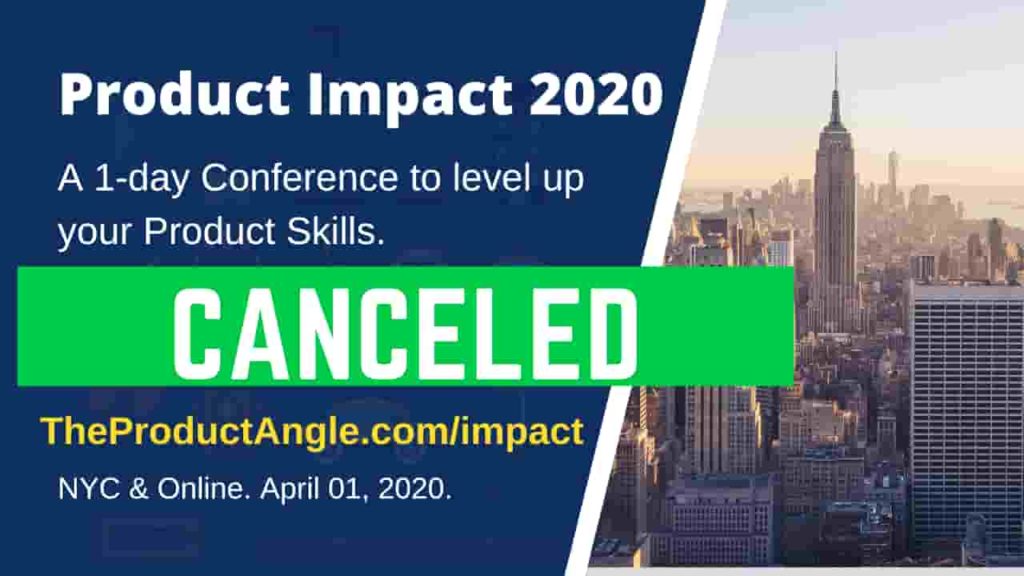
The decision to cancel was not taken lightly, we have a number of attendees flying into NYC from different parts of the world. However, with approximately less than 30 days to go (when we made the announcement), while chatting with our international folks some had not yet booked their travel (airfare) tickets at the time and were feeling cautious.
If we go ahead and then need to cancel because the outbreak doesn’t improve we would feel very bad for attendees especially if they are unable to request cancelations for travel, hotels, etc.
Canceling with approximately 30 days to go seemed like a good period to communicate to everyone We decided to prioritize the health and safety of our speakers and attendees.
5.4: Communicating our decision out
Once the decision had been made, the first to hear official confirmation were our speakers. Next, we sent out an email blast to the attendees and subscribers of our newsletter.
The Product Angle Newsletter is The Product Angle’s newsletter.
We explore product, growth, and people skills.
Below is a snippet of our announcement, to read the full announcement read Canceling Product Impact 2020.
After consulting our speakers and some of our attendees, we are canceling Product Impact 2020.
The world is experiencing an outbreak of the coronavirus. In addition, New York City officials announced the Coronavirus Outbreak Will Spread in New York City.
We don’t know what April 01, 2020, looks like, however, we are prioritizing the health and safety of our speakers and attendees.
Finally, we also used our social media channels through Twitter and Linkedin to communicate our decision out.
(shameless plug: feel free to connect/ follow 🙂 if that’s something you’d normally do.)
In addition, we would like to thank each and every attendee and many also followed up with some amazing thoughtful comments once the decision to cancel Product Impact 2020 was made public.
Table of Contents:
The conference that never happened
Part 6: In Closing, a message from our founder
Hi there, 👋 Pradip Khakhar here. While I did write this entire article, I have used *we* as opposed to *I* for two reasons; 1) Product Impact 2020 is not about me and 2) I am very thankful to everyone who helped me bring Product Impact 2020 to life.
If you have made it this far, thank you so much. Writing this article “The conference that never happened” was both rewarding (writing my story) but also bittersweet (we came so close, yet so far).
6.1: Lessons learned/ the reality
I personally had a blast organizing Product Impact 2020 has forced me to develop and learn new skills. For example, writing cold emails, writing articles consistently, starting a newsletter, video/ audio production, selling tickets, communicating, finding a venue, food arrangements, I mean the list goes on and on.
In the back of my mind, especially when I first announced Product Impact 2020 was the thought what if I fail? What if we don’t sell enough tickets?
Clearly, for a first-time conference organizer, I don’t have the ability to sell 500+ plus tickets. However, when I first thought of Product Impact 2020 I did not want to create a conference with 500 + plus attendees. I wanted to create a niche event (experience).
However, if I don’t try I’ll never know how many tickets I can sell. One thing I do know is it’s not about me or Product Impact 2020 (or selling tickets) it’s about creating an unforgettable experience for Product Impact 2020 attendees where they walk away thinking we can’t wait till next year (hopefully – fingers crossed. Although no promises made).
6.2: The positives
Throughout this article, I have listed so many positives that have come out of organizing Product Impact 2020. I am truly grateful for the friendships, connections, and kind words shared.
6.3: The negatives
I would not say negatives, let’s reframe as the lesson’s learned that maybe did not go as expected to plan.
There are three situations I’d like to mention:
- Disputed Order(s) Refunded [ref:(order reference #)]
- Is this a Product Conference with only one Product Manager speaking?
- Being kicked out of a slack community
Disputed Order(s) Refunded [ref:(order reference #)]
One morning I woke up to an email with the above email subject. I think it was around 4 or 5 am and I was still half asleep waking up. Initially, I thought it was spam as I knew most of the attendees. I was about to delete the email and something in my gut said open it and to my horror, someone I thought was a friend requested a chargeback.
As Eventbrite put in the email:
We received notification that an order for Product Impact 2020. A 1-day conference to level up your Product Skills. was charged back by the cardholder. A chargeback occurs when a ticket buyer formally disputes a purchase with their bank or credit card company.
We have proactively refunded the disputed order. We understand that this action may not be in line with your policy on refunds. However, we have taken this action in response to a formal dispute from our banking partners and feel it is necessary to protect you from incurring a potential loss. We have absorbed the associated fee from our banking partner as a courtesy.
Wow, I was really shocked I immediately reached out to this person and asked what happened. Radio silence, I thought no worries and around 10 am the same morning I called Eventbrite to understand what a chargeback meant. Eventbrite confirmed that a chargeback occurs when a ticket buyer formally disputes a purchase with their bank or credit card company.
What I told Eventbrite
I asked Eventbrite if this impacts my credibility or relationship with Eventbrite and I don’t recall what Eventbrite said. However, I asked the customer rep if they would like any support (that this is not a fraud) between the person requesting a chargeback and me.
This person asked for a discount and I approved. Then the person purchased this ticket and therefore I don’t understand how this person could claim with their bank that the ticket buyer formally disputes the purchase.
Eventbrite said the department that handles this information is not currently available and I should reply to the Eventbrite email with any support I wanted to share. I made it very clear that under no circumstances do I want this person at my event anymore and I do not wish to take any further action (apparently I could not do anything about it anyway). The refund issued, case closed.
My reply to Eventbrite included the following screenshot.
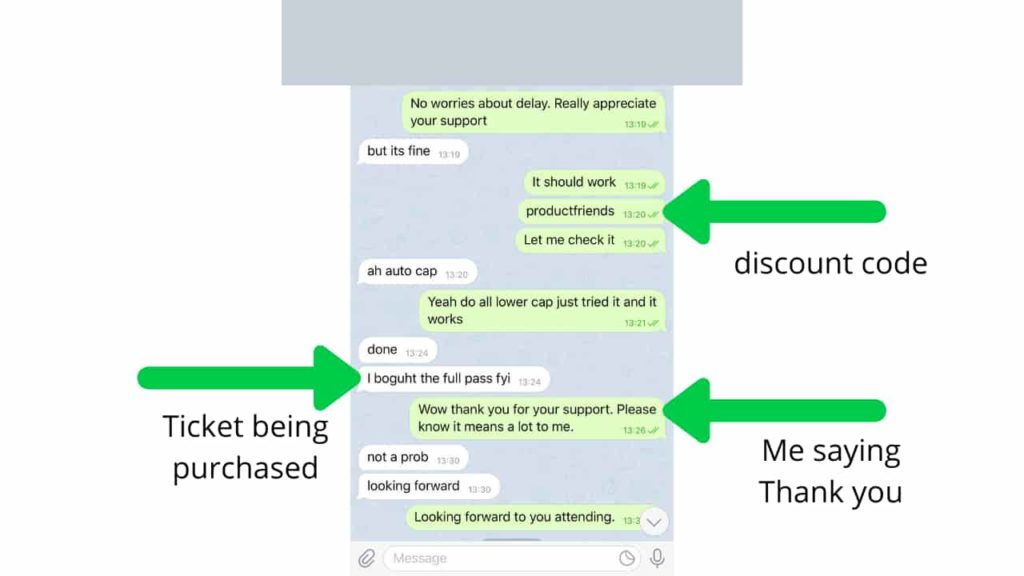
As you can clearly see a discount code was offered, I was then advised that the buyer bought the full pass (meaning in-person ticket as opposed to the video only ticket) and I thanked this person for their support.
Update
The person told me that his credit cards had been stolen and this person did not request a chargeback. I explained what Eventbrite told me. I did not get a chance to ask then why did this person go radio silent and did not respond to my messages/ email.
To be clear, I have zero expectations and if indeed the person’s credit cards were stolen I fully appreciate and acknowledge that it could have taken a month to get this person’s life back to normal and combined with what we are dealing with.
It is a learning experience for me. Meaning, Eventbrite forces you to select a refund policy and I chose no refunds (as do many event organizers), however, we understand that things happen and therefore the ticket could be transferred to someone else.
I have seen many event organizers do this and it creates a predictable headcount.
Otherwise, if people could cancel the day before planning an event would be very difficult.
Lesson learned: If you call your credit card company/ bank and complain that the transaction was a fraud and claim a chargeback you’d get it (no questions asked).
Is this a Product Conference with only one Product Manager speaking?
To set the stage it was around the end of December 2019. I was browsing Twitter late in the evening and I saw a tweet that said something along the lines of (obviously paraphrased); “Hi, our corp has training budget left we need to use before the end of the year any suggestions?”.
I tweeted about Product Impact 2020 (see image below) and one of the responses received confused me. Was it a serious question?
Here is the reply:
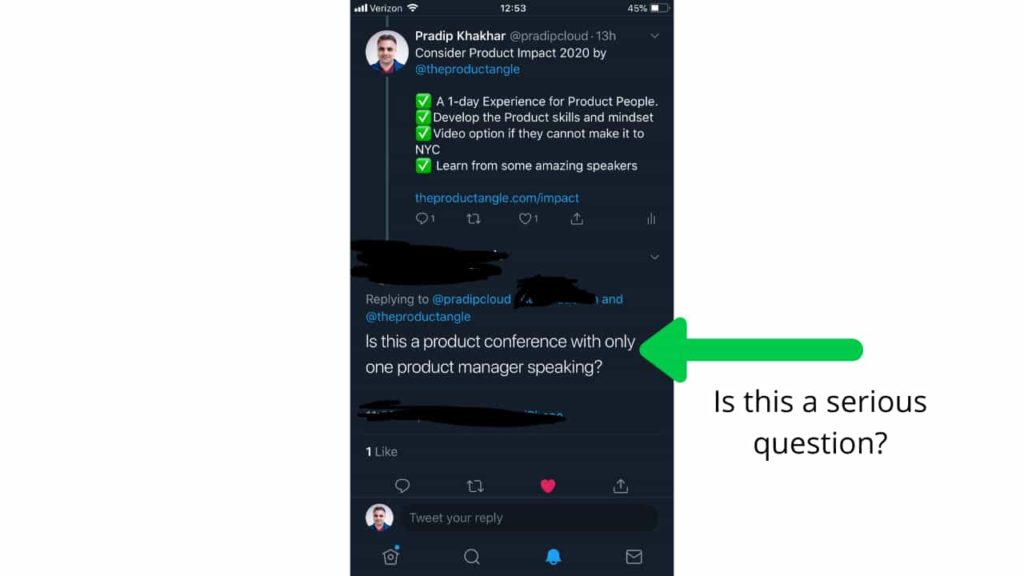
“Is this a Product Conference with only one Product Manager speaking?”
Not really sure how to respond to that. Initially, I thought it was a serious question. However, upon checking out the profile page this person appeared to an experienced Product Manager maybe even a Product Leader.
After some thought, I replied “Hi, [Name] 👋 As you know PM’s need to collaborate and communicate effectively in cross-functional teams. We believe it’s important to bring other functions into the conversation. To answer your question, 4 people from the speaker list currently or previously worked as a PM.”
No response.
I followed up with a DM “Hi [Name], thank you for your question. Let me know if I can answer any other questions. I’d love to learn more about you and what you do. Would you be open to a chat?”
No response.
Later (earlier this year) I noticed the same person promoting product training in NYC (I believe the same person was the instructor teaching) and then it made sense to me.
To be clear I am not making any accusations towards the person who asked the question or the large company that this person was promoting the NYC training session with.
However, to me, it did seem odd. 🤔
To read why this question worries me read the thesis behind Product Impact 2020.
Lesson learned: You’ll need thick skin online.
Being kicked out of a slack community
One Saturday afternoon I was browsing a Slack community I am a part of and saw a channel that was something along the lines of # NYC-events. Living in NYC I was curious so I clicked the channel and saw people posting their product events in this channel.
What do you think I did?
Of course, the name of the channel and actions of the channel members matched. It was a place for people to share events in NYC.
I added Product Impact 2020 to the conversation. Three days later I no longer had access to the Slack community. I tried to contact support and a few contacts at the organization and no reply.
Still to this day, I don’t know the reason for being kicked out.
Be it naive or stupidity on my part, my guess is that this organization also runs product events and conferences and did not want my event listed there.
Also, to be clear when I browsed the # NYC-events channel there were events hosted by this organization and there were events that were not hosted by this organization but hosted by other organizations. Hence I assumed it was ok to post.
Lesson learned: Reach out to the admins of the community before posting or risk being kicked out.
Not interested
In case you are wondering if I’d attach any names to the above three situations. Absolutely not, so please don’t even ask.
6.2: Thank You
Firstly, I have to give a shout out to James Kenny for suggesting the title “The conference that never happened” for this article and James consistently read articles and provided feedback. Thank you, James.
I am very grateful for Hiten Shah for responding to my Twitter DM’s and providing valuable feedback. As a result of a DM conversation, we changed the name from Pitchside 2020 to Product Impact 2020.
Next, I’d like to thank all the speakers, Michelle Chu, Katelyn Bourgoin, Marcie Walker, Erin Essex, Bianka McGovern, Mubashar Iqbal, Tremis Skeete, and Henry Bruce.
In addition, I’d like to thank Veni Kunche who runs Diversify Tech who kindly shared our Scholarship program.
Next, I’d like to thank all our supporters, attendees, people who shared Product Impact 2020 on social, people who sent amazing DMs offering their support and wanting to a part of Product Impact 2020.
From the bottom of my heart Thank you, all. ❤️
Done: Product Impact 2020 – chapter closed.
Table of Contents:
The conference that never happened
Part 7: What’s next
We have been thinking long and hard about this. The Product Angle started in 2018 as a Podcast, which we failed miserably at and pivoted into writing articles. We held a few smaller meetups, get-togethers, zoom calls, and NYC-based dinners.
We have a number of exciting things planned for now we will leave you with.
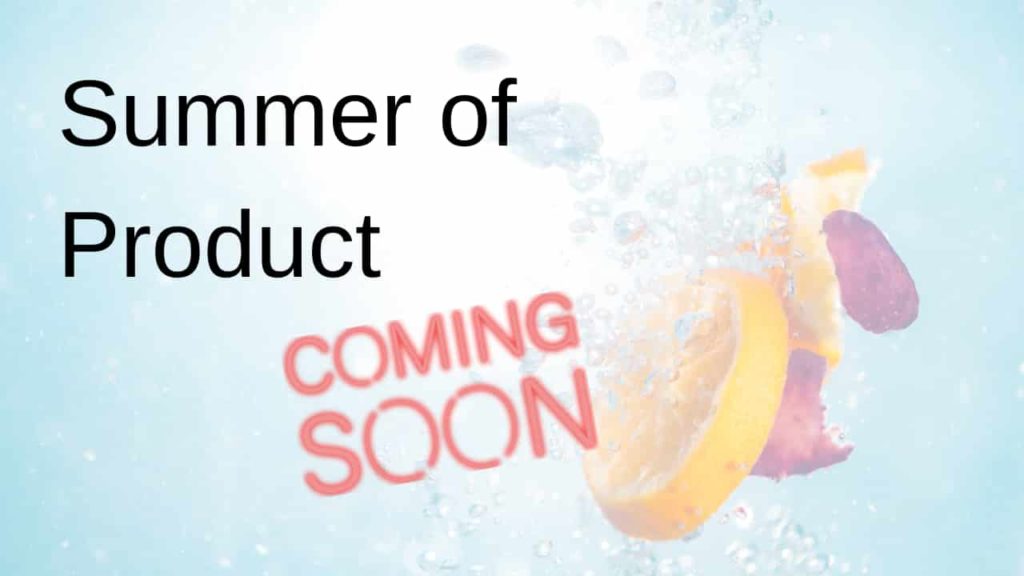
The Product Angle Newsletter
Find out what’s next first by subscribing to our newsletter.
Subscribe to our weekly newsletter where we share resources on product, growth, and people skills.
